Revise: remember when you learned about the different places in a city back in form 4. Well, it’s time to take a little trip down memory lane and revisit those spots! Imagine you’re exploring a busy city or a peaceful village — what places do you see around? Let’s dive in, take a look, and refresh our memories!
Let’s learn: picture this — someone is giving you directions, but you do not understand words like "next to,” “behind,” or “across from.” It would be hard to figure out where to go, right? Prepositions of place and direction are like your language GPS — they help you understand exactly where things are! Watch the video:
You might already know some of these prepositions from form 3. Revise here: Prepositions of Place
Now let's look deeper at the words from the video.
Word bank:
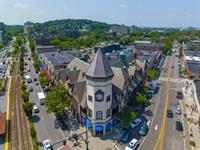
on the corner of — [ɑn ðə ˈkɔrnər ʌv] — at a place where two streets meet; uz stūra
There's a tower building with a clock on the corner of White Street and Fourth Avenue.
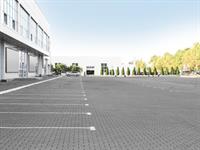
in front of — [ɪn frʌnt ʌv] — close to the front part of something; priekšā
There is a parking lot in front of the building.

between — [bɪˈtwiːn] — in or into the space that separates two places, people, or objects. Pay attention: the key element here is: "two places, people or objects"; starp (diviem)
There is a street and a pedestrian bridge between these two buildings.
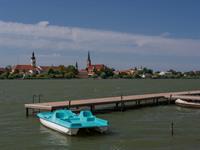
across from — [əˈkrɒs frɒm] — from one side to the other of something with clear limits, such as an area of land, a road, or a river; pretējā pusē
The boat docks are across from the city.

around the corner from — [əˈraʊnd ðə ˈkɔːnə frɒm] — very close or nearby, typically just a short distance away or located on an adjacent street or area; ap stūri / aiz stūra
Just wait a minute and you will see! There are mountains around the corner from here.

at — [æt] — used to show an exact position or particular place; norāda uz konkrētu vietu
She is at the library.
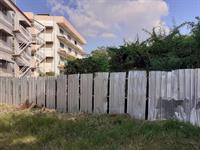
behind — [bɪˈhaɪnd] — at the back (of); aizmugurē
The apartment building is behind the fence and bushes.

far from — [fɑː frɒm] — at, to, or from a great distance; tālu no kaut kā
The mountain is far from the city.
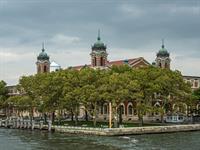
kitty-corner from — [ˈkɪti-ˈkɔːnə frɒm] — in a position that is diagonally opposite someone or something else (more used in American English); pretējā pusē pa diagonāli
That small square with trees is kitty-corner from here.
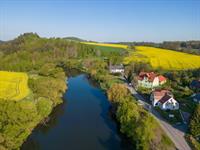
near — [nɪər] — not far away in distance; tuvu
This charming village is near the winding river.

beside — [bɪˈsaɪd] — used when describing two people or things that are very close to each other with nothing between them. The synonym of "next to"; blakus
These houses are beside each other.

on — [ɒn] — used to show that something is in a position above something else and touching it, or that something is moving into such a position; uz
She is on a train heading to the big city.
Pay attention! Prepositions can be tricky. For example, do you say: “I am at the cinema.”? Or maybe: “I am in the cinema.”? Perhaps this is correct: “I am on the cinema.” Let’s find out. Watch a short video:
Study these examples:
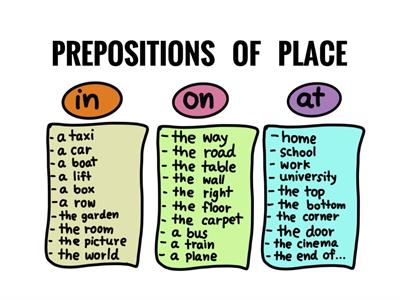
To sum it all up:
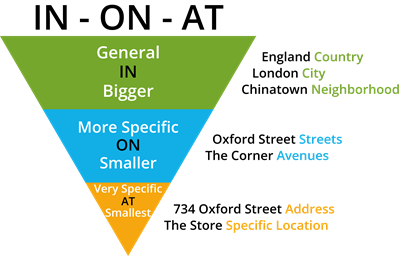
Svarīgi!
Pay attention: the most common sentence structure with prepositions is the following:
The + noun + is/are + preposition + the + noun.
Example: The library is across from the grocery store.
The + noun + is/are + preposition + the + noun.
Example: The library is across from the grocery store.
Atsauce:
Picture "National Museum of Immigration" - Claudine Van Massenhove / Shutterstock.com